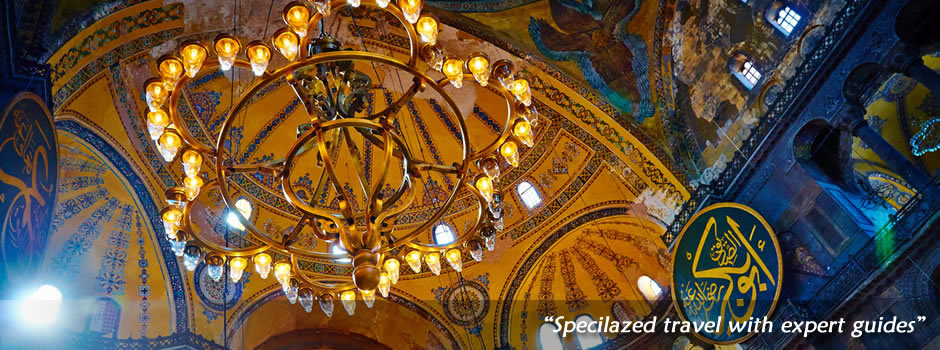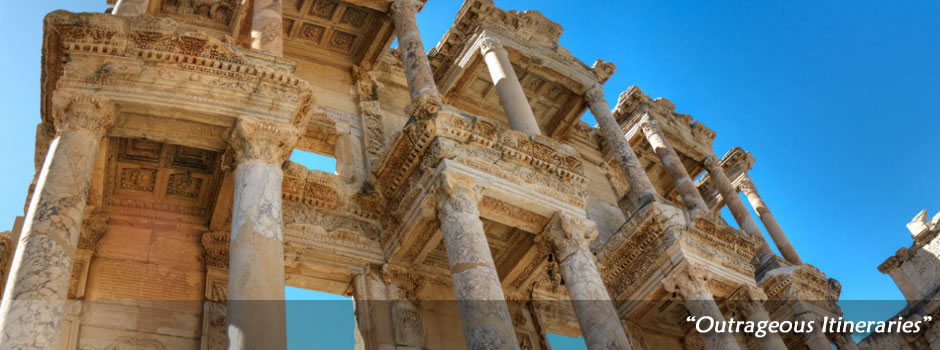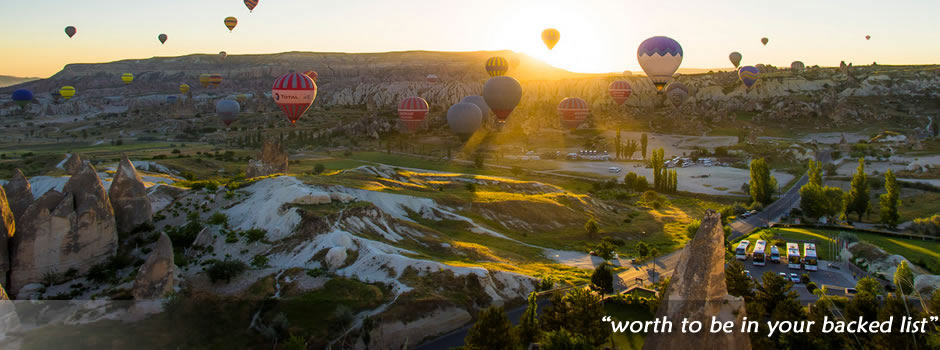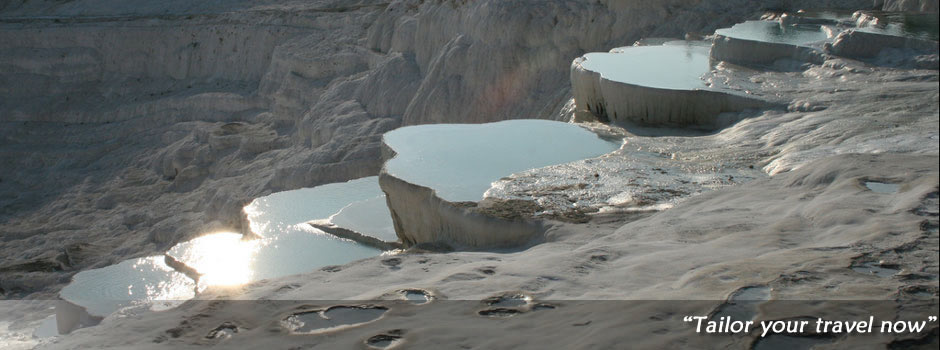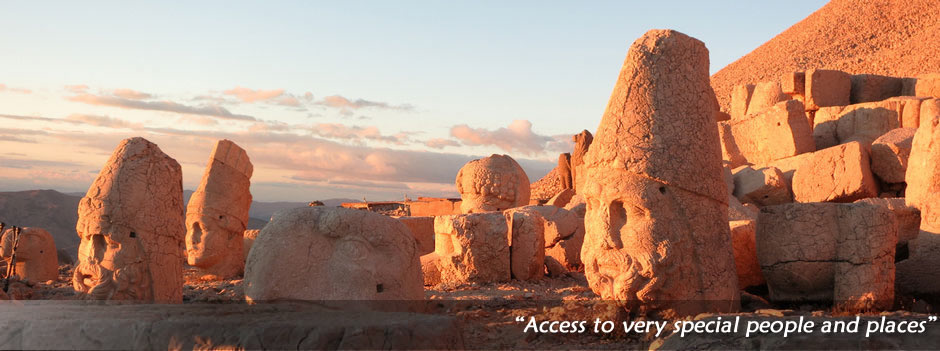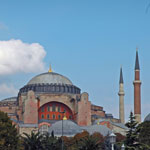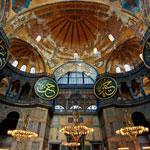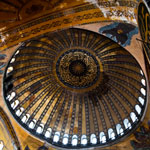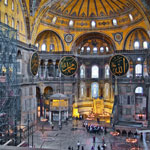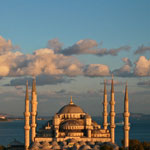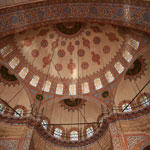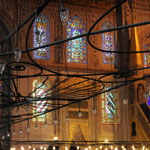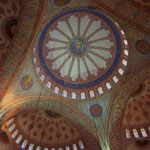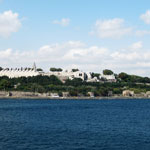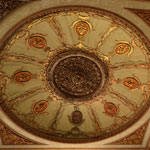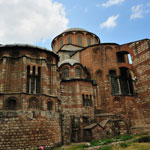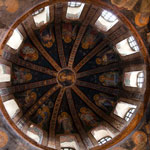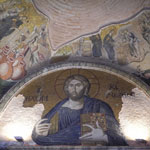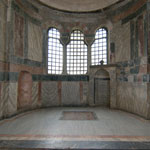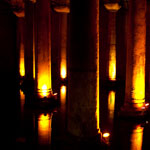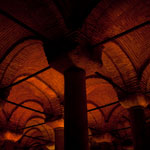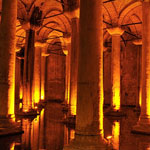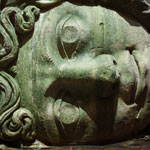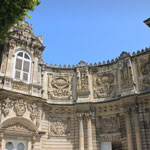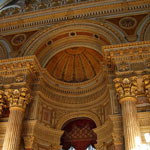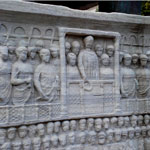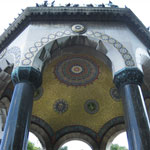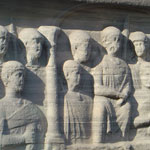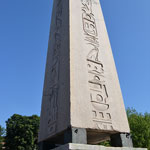ABOUT ISTANBUL
ATTRACTIONS OF ISTANBUL
Perhaps more than any other city in the modern world, Istanbul embodies the ideal of unification. Somewhere beneath the magnificent waters of the Bosphorus, Europe and Asia meet, making Istanbul the only major city in the world that links two continents and many cultures and religions.
There is, of course, far more than geography to the magical hold of Istanbul exerted over man’s imagination throughout its fabulous history. Three separate empires ruled the world from this powerful capital – the Roman, the Byzantines and the Ottomans. Trace of their presence – in ancient walls, imressive hippodromes, royal basilicas, aqueducts, magnificent mosques, brilliant palaces – shape Istanbul’s alluring landscape and color its exotic texture.
Today, Istanbul blends the ancient and the modern in a seamless tapestry of life. It stands, in a new world, as a model of free market economics, enlightened social reforms, cultural and religious diversity. In many ways, Istanbul is the capital of the future – a marriage of East and West for the benefit of both!
-Hagia Sophia (Aya Sofya Camii)
-The Blue Mosque ( Sultanahmet Camı)
-Topkapı Palace
-The Basilica Cistern
-Dolmabahçe Palace
-The Hippodrome
Hagia Sophia (Aya Sofya Camii)
The Hagia Sophia was probably the largest building on the world's surface, barring the Egyptian Pyramids, or the Great Wall of China. or many centuries it was the largest church and today is the fourth largest in the world. It was dedicated to the Hagia Sophia which means the Divine Wisdom, an attribute of Christ.
Today's Hagia Sophia is the third building built at the same place. The first one was a basilica with a wooden roof and was built in 390 AD. This original church Megale Ecclesia (Great Church) was burned down in a rumpus in 404. Theodosius replaced it with a massive basilica which was burned down in the Nika Revolt against Justinian in 532. Justinian began rebuilding the Hagia Sophia in the same year. The architects were two Anatolian geniuses, Anthemius of Tralles, an engineer and a mathematician and Isidorus of Miletus, an architect. They started collecting materials from all over the empire. In the construction ten thousand workers worked under the supervision of one hundred master builders. it was used as a mosque for 482 years. Under the order of Atatürk and the decision of the Council of Ministers, Hagia Sophia was converted into a museum in 1935.
Hagia Sophia is open for visit every day except Mondays. The winter visiting hours for the Hagia Sophia are from 09.00 to 17.00, with the final entry being at 16.00. During the summer, the visiting hours are between 09.00 and 19.00, with the final entry being at 18.00. Passes are available at the box office in the museum.
The Blue Mosque ( Sultanahmet Camı)
The Sultanahmet Mosque, known as the Blue Mosque, is the central element of the complex built by Ahmed I (1603-1617) and was completed after the sultan's death in 1617. Its architect is Mehmed Aga (d.1622), whose epithet "Sedefkar" refers to his mastery in mother-of-pearl. The mosque is considered to be the last example of Ottoman classical architecture; Mehmed Aga was an apprentice under Sinan (1450?-1588) and Davud Aga (d.1598), two architects whose works have defined the style of this period.
The mosque is composed of a large prayer hall unified under a single dome and an open courtyard to the northwest. It is oriented thirty-nine degrees east of south. An outer precinct, enclosed by a stonewall with windows, wraps around the mosque and court on all sides except for qibla. The elevation drops sharply towards the Bosphorus on the qibla wall side where a separate terrace and a royal kiosk were built on a partial basement.
The flow of space on the interior is uninterrupted except for a few functional elements. There is a muezzin's platform elevated on columns in front of the southern pier, which has geometric patterns carved in its marble balustrade. An elaborately decorated wooden pulpit is set adjacent to the opposite pier. The royal lodge (hunkar mahfili), a screened platform raised on arches carried on precious marble columns, is located behind this pier and occupies the bay underneath the eastern corner dome. It is accessed from inside the mosque, as well as from the royal kiosk outside. An arcade, with balustrades at the balcony level, follows the entire length of the interior walls with the exception of the qibla wall. It is broken up into segments by the projecting structural piers and the supporting piers of the smaller semi-domes, which replace the arcade columns on their way down.
The Sultanahmet Mosque has the unusual feature of having six minarets, four of which rise from the corners mosque and two lower minarets placed at the front corners of the courtyard. The four around the mosque have three balconies each, while the courtyard minarets are furnished with two. All six minarets have fluted shafts and balconies with stalactite corbels. The northeastern minaret was restored in 1955.
Topkapı Palace
The Topkapı Palace served for more than four centuries as the imperial residence of the Ottoman household, including 24 Sultans in total. Abandoned as the imperial residence in 1853 by Sultan Abdülmecid I for the Dolmabahçe Palace, in 1924 it was converted into a museum. It now houses an extraordinary collection of imperial treasures, including priceless porcelain, jewels, armour, costumes, weaponry, miniatures, calligraphy, and other precious objects and works of art that once were imperial property When Sultan Mehmed II conquered Constantinople in 1453, he found that what remained of the Byzantine palaces was uninhabitable.
Thus one of the first tasks confronting the new ruler of this imperial city was the construction of an appropriate royal residence. First the Old Palace (Eski Saray) was built in the district of what is now called Beyazıt in the environs of İstanbul University A few years later the construction of the Topkapı Palace was undertaken on the First Hill of the city which overlooks the point where the waters of the Marmara Sea and the Golden Horn flow into each other. Although the main buildings of this palace complex were completed sometime in the 1460s, new sections were continuously being added even until the nineteenth century There was no fixed plan for the overall construction of this complex, but rather it grew as need dictated. This palace served not only as the residence of the Ottoman ruler and his household, but also functioned as the seat of the Ottoman government. In addition to the residential quarters, the palace consists off our distinct courtyards which functioned as the service area of the palace.
The Chora Church ( Kariye Museum )
Kariye Museum originally formed the center of a Byzantine monastery complex. Only the church section, which was dedicated to Jesus Christ the Savior, has survived. After the arrival of the Turks in Istanbul, this building, like the Hagia Sophia, was converted into a mosque. In 1948 it was made a museum leaving no Islamic element in the building except the 19C minaret outside in the corner.
"Kariye" is the Turkish adaptation of an ancient Greek word "Chora" which refers to countryside. Considering the perimeter of the walls of Constantine (4C AD) the building was located out of the city. If this theory is correct Chora Monastery should have been from the 4C. But unfortunately according to sources, the existence of Chora Monastery before the 8C is not certain.
Chora went through many restorations the last most significant instigated by Theodorus Metochitus, prime minister and first lord of the treasury, in the beginning of the 14C. The three most important features of the church, mosaics, frescoes and the funerary chapel (Paracclesion) are from that period. Theodorus Metochitus built the Paracclesion for himself and he was buried in the entrance of the church; his grave bears a marble stone. The art of painting in frescoes and mosaics were the indications of a new Byzantine art movement which was parallel to Italian Renaissance started by Giotto (1266-1337).
The building consists of the nave, the inner narthex, outer narthex and the paracclesion. The domes of the inner narthex and the paracclesion are lower than the main dome and are only seen from the rear of the church. The drum is supported on four huge pilasters in the corners and four great arches spring from these. The transition is supplied by pendentives. The drum has 16 flutes, each pierced by a window. Entrance to the nave is through both inner and outer narthexes. The niches in the paracclesion were built to keep sarcophagi, as this section was the funerary chapel.
The Basilica Cistern
Istanbul was one of the most often besieged cities in the world and has always needed permanent water supplies. And as a result many underground cisterns were built during the Byzantine Empire. Water was brought to these big reservoirs from far away sources through aqueducts. It is still possible to see remains of a large aqueduct in Unkapani. This is called Bozdogan Kemeri (Aqueduct of Valens) and was built in 375 AD by the Emperor Valens. Because Turks have always preferred running water, after capturing the city from the Byzantines, they did not use cisterns properly. Most of them were usually converted into either small bazaars or storehouses. The largest and most ornate of these cisterns is Yerebatan Sarayi. In its construction, columns and capitals of earlier temples were used and this provides a very decorative appearance. This is why it is called saray which means “palace” in Turkish.
Yerebatan Sarayi was dug and built probably after 542 by Emperor Justinian I. There are 336 columns most of which are topped with Byzantine Corinthian capitals. The cistern is 70 m / 230 ft wide and 140 m / 460 ft long.
Between 1985-1988, the Municipality of Istanbul cleaned and restored it thoroughly and built a wooden walkway between the columns. In addition to that there are special effects presented by a light and sound show. By looking at the water level marks on the plaster walls which reach the height of the capitals, it is possible to understand that the cistern was very full in times gone by.Two Medusa heads were used to form bases for two columns in a far corner of the cistern. The position in which they were placed suggests that the people who put them there were Christians and did not want to revere a god of a pagan period. The water inside the underground cistern is collected rain water. The carp in the water are decorative and an incidental protection against pollution. Some people even think that the Byzantines originally also raised fish in the cistern.
Dolmabahçe Palace
Towards the end of the Ottoman Empire, in the 19C, the Westernization movement was dominant. For the Ottomans who lived in Istanbul, "West" was in the "north" beyond the Golden Horn. In mid-nineteenth century they moved a few kilometers to the north for (Dolmabahce Palace) and this change took the Empire to an entirely different dimension.
It covers an area of 25 hectares / 62 acres. The palace was built by Sultan Abdulmecit as the outcome of his Westernization influences between the years 1844 and 1853. The official opening of the palace was after the Crimean War, 1856. Abdulmecit lived in his new palace for only 15 years. The palace was used by different sultans until the republic. During the republic the palace was used for foreign statesmen and democratic cultural activities. Mustafa Kemal Ataturk occupied a room at the palace on his visits to Istanbul and died there in 1938.
The construction of the palace was at a time when the economy of the Ottoman Empire was not at all good. This difficult situation was not taken into consideration and all the materials used at the palace were very expensive, of top quality and brought from different countries. Among the valuable items were vases from S'vres, Lyon silk, Baccarat crystals, English candelabra, Venetian glasses, German and Czech Bohemian chandeliers and furniture in the rococo style.
The palace consists of 285 rooms and 46 halls. There are approximately 600 paintings and very beautiful huge Hereke carpets specially woven for Dolmabahce.
The Dolmabahce Palace is an impressive building facing the sea with very high walls on the side facing inland. The main building is surrounded by magnificent palace gardens. There are nine gates on the inland side, two of which are monumental. On the front facing the sea there are five gates.
The Hippodrome
The original building of the Hippodrome was built by the Roman Emperor Septimus Severus in 203 AD when he rebuilt Byzantium. Constantine the Great reconstructed, enlarged and adorned it with beautiful works which were brought from different places of the Roman Empire when he chose Byzantium as his new capital.
Although there is not much left from the original building except the Egyptian Obelisk, Serpentine and Constantine Columns, according to the excavations carried out, the hippodrome was 117 m / 384 ft wide and 480 m / 1575 ft long with a capacity of 100,000 spectators. It is said that one quarter of the population could fit into the hippodrome at one time.
During the Byzantine period, the Hagia Sophia was the religious center, a place which belonged to God; the palace belonged to the emperor; and the hippodrome was the civil center for the people.
Chariots drawn by either 2 or 4 horses raced here representing one of the four factions divided among the people. Each faction was represented by a color. Later on these four colors were united in two colors; the Blues and the Greens. The Blues were the upper and middle classes, orthodox in religion and conservative in politics. The Greens were the lower class and radical both in religion and politics. One of these political divisions ended with a revolt which caused the death of 30,000 people. This revolt was named after people's cries of "nika" which meant "win" and this Nika Revolt took place in 531 AD.
The central axis of the hippodrome was called spina and the races took place around the spina. The races used to start by the order of the emperor and the contestants had to complete seven laps around the spina. The winner was awarded a wreath and some gold by the emperor.
The hippodrome was destroyed and plundered in 1204 by the Crusaders. After the Turks it lost its popularity and especially with the construction of the Blue Mosque, the ancient hippodrome changed its name and became At Meydani (Horse Square) a place where Ottomans trained their horses. The only three remaining monuments from the original building are the Egyptian Obelisk, the Serpentine Column and the Constantine Column.




![]() As featured in Romantic
As featured in Romantic 